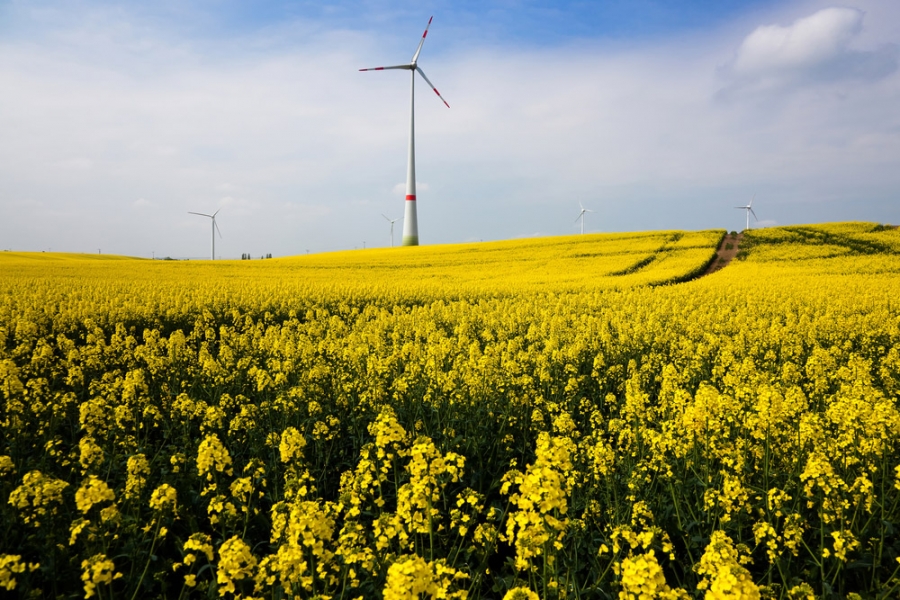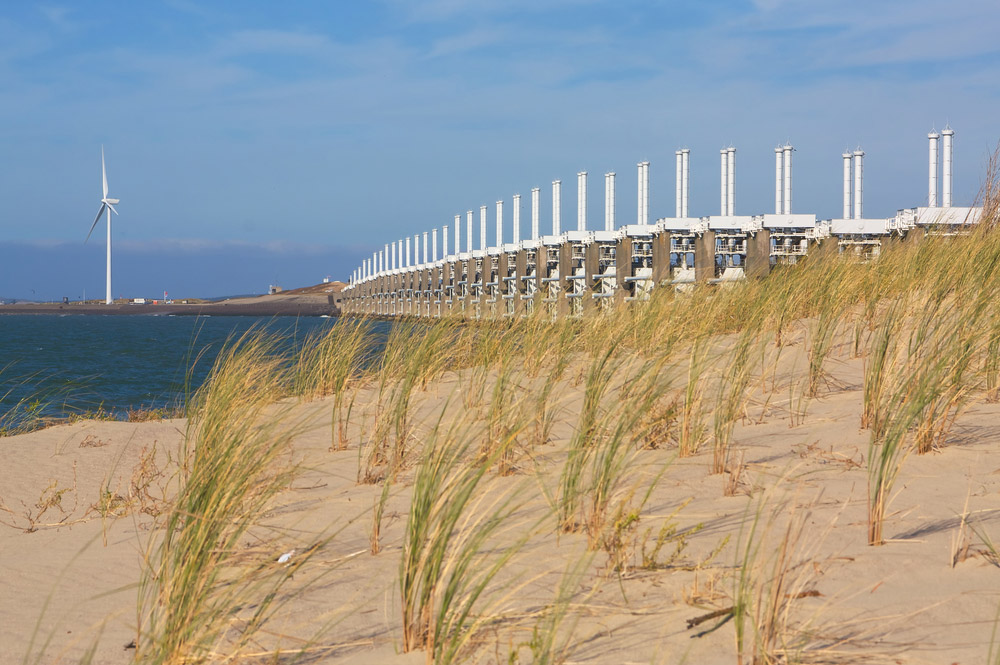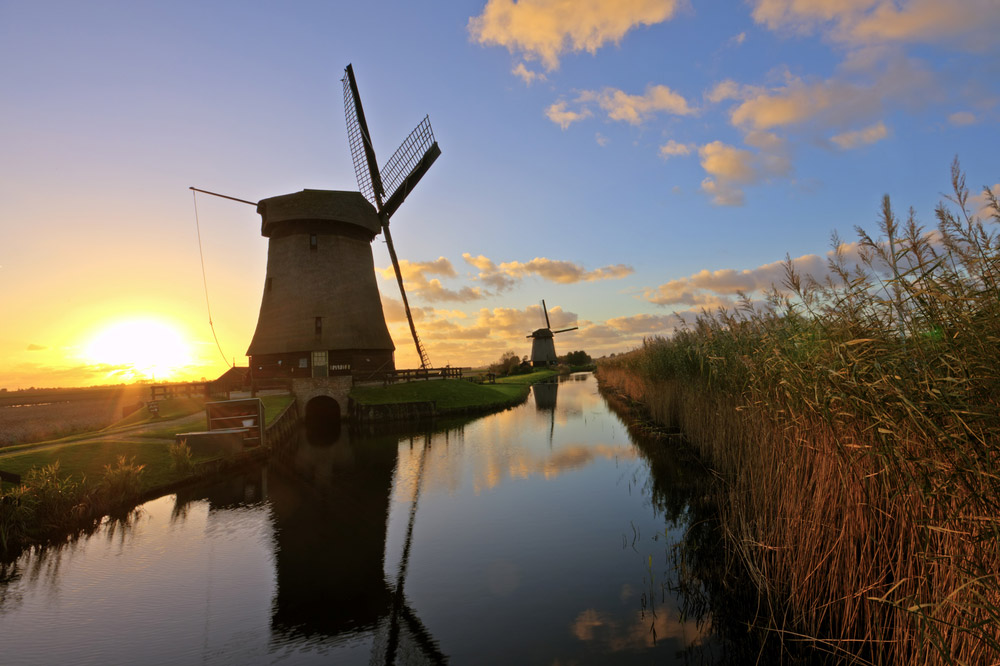Future Improvements in Wind Power
As the need for alternative and clean sources of power grows, we're investigating the possibilities. Here are 11 of the latest advances in wind power technology.

Solar power, geothermal power, tidal power, and wind power have become prevalent focuses in our development of reliable green energy. Here we cover some of the concepts, ideas, and working ways scientists and inventors around the world have come up with to harvest the incredible potential of Earth's winds.
Airborne Wind Turbines
The Makani Airborne Wind Turbine is designed to harness the strong winds at high altitudes, providing increased efficiency. Instead of a structure erected to hold a turbine aloft, the Makani Airborne Wind Turbine is a tethered wing equipped with turbines that flies at heights between 800' and 1,950'; winds in this part of the atmosphere are more consistent. The Makani Airborne Wind Turbine requires 90% less material to build and install than a conventional wind turbine, so it costs less, which means that many countries around the world could benefit from its capabilities. It also can be deployed over deep water. The Makani design allows a flexibility in its deployment, but we are yet to see a wide implementation of this technology.
We also have the wind turbine developed by Altaeros Energies, which uses aerospace technologies to elevate an inflatable shell filled with helium to high altitudes. Altaeros Energies maintains that their wind turbine will reduce energy costs by a staggering 65% by harnessing these higher winds. The installation of one of these turbines would only take days and is suitable for remote, military, and offshore sites.

Low-Speed Wind Power
Wind Power Innovations and their Wind Harvester have used a horizontal solution to most wind power design problems. They use reciprocating motion and aerofoils to generate electrical power even at low installation heights and from low-speed winds. The Wind Harvester is said to provide an effective solution with high-speed winds as well.
Wind Power Without Blades?
ADNA has proposed the Windstalk, an innovation in which arrays of carbon fiber-reinforced resin poles house stacks of piezoelectric ceramic discs. Electrodes between the discs are connected by cables reaching from top to bottom. (One cable connects even electrodes, while another connects odd electrodes.) When the winds force the poles to sway, the compression of the discs generates a current through the electrodes.
Wind Lenses
Researchers from Kyushu University in Japan claim to have found a way to boost the efficiency of traditional wind turbines up to three times. How is that achieved? The placement of a diffuser shroud, the "wind lens," around the diameter of the turbine blades creates a low-pressure region that increases wind flow to the turbine. Kyushu University erected two turbines equipped with wind lenses at its Ito campus and also installed turbines with wind lenses in an offshore application in Hakata Bay in 2011.
Vertical Wind Turbines
Two vertical wind turbines have attracted attention recently: the Windspire and the eddy turbine. The Windspire can produce nearly 2,000 KW hours per year at an annual average wind speed of 11 mph. Its vertical design makes it look more like a rotating antenna, rather than a traditional (i.e., horizontal axis) wind turbine. The eddy turbine has a sleek dual-axis design; according to test results, it is safe in wind speeds up to 120 mph and can produce up to 600 W of power. The eddy turbine can be assembled easily by three people for residential applications, in combination with a residential solar panel array.
Silent Wind Turbines
Renewable Energy Solutions Australia offers the EcoWhisper turbine, which steps away from the traditional tri-bladed design and instead employs 30 blades to harness the wind's power. Thee ecowhisper is available in two models, the 20 kW and a 5 kW, and both are touted to operate in almost complete silence.
Storage of Wind Power
The Green Power Island is something truly interesting; each Green Power Island stores surplus green power in seawater when demand is low and supplies it via wind- and solar-powered pumps.The Green Power Island system takes conventional hydro power, supplied by a reservoir of seawater, to generate electricity. When demand is low, the seawater is pumped out of the reservoir. As consumption rises, the seawater is allowed to flow back into the reservoir, driving turbines that generate electricity.

Community Wind Farms
These wind farms are community-owned wind farms that generate much electricity and power thousands of homes. They provide clean energy and income for the members of the community, as well as benefits like broader tax bases for rural communities. A complication of community-owned wind power is that federal, state, and local policies must be taken into account. A good source of information on developing community wind power can be found here.
Offshore Wind Turbines
The Dutch company Ecofys is working on a wind project meant to combine offshore wind turbines with seaweed farming facilities. They say this will help the production of feed for animals and fish, as well as providing energy and biofuels. Because wind farms are closed to shipping and commercial fishing, a combination seaweed cultivation/wind farm could also function as a marine conservation area.
Although some of these are prototypes or still in the conceptual or testing stage, the future of wind power looks promising because of these new technologies. We can only hope that these nature-friendly and more balanced ways of providing power will become prevalent over their traditional, less sustainable counterparts.
Grace Bailey currently works on a behalf of Man and Van in Tooting.
Grace Bailey
Grace is an artistic and passionate writer, keen on exploring all the miracles of the world around us. She really enjoys sharing tips and tricks of home organizing, eco-friendly living, and innovative technologies.






